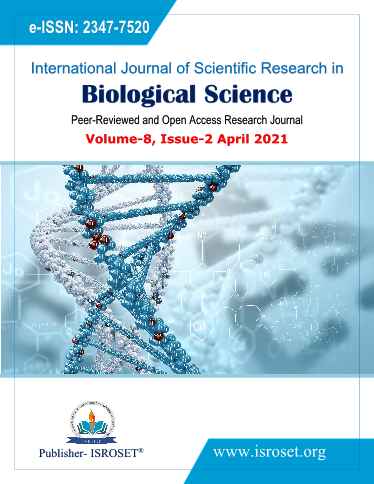Three known species of the genus Parahadronchus – First report from Mizoram, India
Keywords:
Mononchida, Parahadronchus, Mizoram, IndiaAbstract
Mononchs play a vital role in reducing phytophagous nematode population. The present study deals with the diversity of Parahadronchus in Mizoram. Various soil samples were collected from different parts of Mizoram along with the GPS location. Upon processing and examination, three known species of the genera Parahadronchus were found, viz., Parahadronchus siroii, Parahadronchus marami and Parahadronchus shakili. P. siroii is distinguishable from P. shakili in its smaller body, short oesophagus, lesser number of vulval papillae, small lip, etc. P. marami has narrower buccal cavity, thinner body with three subventral denticles. P. shakili has larger body, broader buccal cavity with 3-6 subventral teeth.
References
M.S. Jairajpuri, “Studies on Mononchida of India I, The genera Hadronchus, Iotonchus and Minonchus and a revised classification of Mononchida, new order”, Nematologica , Vol. 15, pp. 557-581, 1969.
R.H. Mulvey, “Predacious nematodes of the family Mononchidae from the Mackenzie and Porcupine river systems and somerset Island, N.W.T., Canada”, Canadian Journal of Zoology , Vol. 56, pp. 1847-1868, 1978.
W. U. Khan and M. S. Jairajpuri, “Studies on Mononchida of India XII. The genus Iotonchus (Cobb, 1916) Altherr, 1950 with a key to the species”, Nematologica, Vol. 26, pp 1-9, 1980.
G. W. Yeates and T. Bongers, “Nematode diversity in agroecosystem”, Invertebrate biodiversity as bioindicators of sustainable landscapes, Elsevier, pp. 113 – 135, 1999.
L. Bina and N. Mohilal, “Behaviour of plant parasitic nematodes associated with mulberry plants with special emphasis to the family Hoplolaimidae from Manipur, India”, International Journal of Scientific Research in Biological sciences, Vol. 7, Issue 4, pp. 44 – 50, 2020.
W. Ahmad and M.S. Jairajpuri, “Mononchida: The predaceous nematodes”, Brill Leiden - Boston, pp. 17, 2010.
N. Ahmad and M.S. Jairajpuri, “Effects of pH, mineral salts and fatty acids on the predatory nematode, Parahadronchus shakili(Jairajpuri, 1969)”, Indian Journal of Nematology, Vol. 12, Issue 1, pp. 22 – 30, 1982.
N. Ahmad, “Population fluctuation of predatory nematode Parahadronchus shakili(Jairajpuri, 1969) Mulvey, 1978 (Mononchida)”. In the Proceedings Symposium on Ecology and Animal Population, India. Pt. 3, pp. 1- 12, 1982.
N.A. Cobb, “Estimating the nematode population of soil”, USDA Agriculture Technical Circle 1, pp. 48, 1918.
G. Thorne, Principles of Nematology, Mc Graw-Hill, New York, pp. 553, 1961.
J.W. Seinhorst, “A rapid method for the transfer of nematodes from fixative to anhydrous glycerine”, Nematologica, Vol. 4, pp. 67-69, 1959.
K.Renubala and Ch. Dhanachand, “Two new species of the genus Parahadronchus Mulvey, 1978 from Manipur”, Current Nematology, Vol. 3, pp. 79-82, 1992.
Downloads
Published
How to Cite
Issue
Section
License

This work is licensed under a Creative Commons Attribution 4.0 International License.
Authors contributing to this journal agree to publish their articles under the Creative Commons Attribution 4.0 International License, allowing third parties to share their work (copy, distribute, transmit) and to adapt it, under the condition that the authors are given credit and that in the event of reuse or distribution, the terms of this license are made clear.







